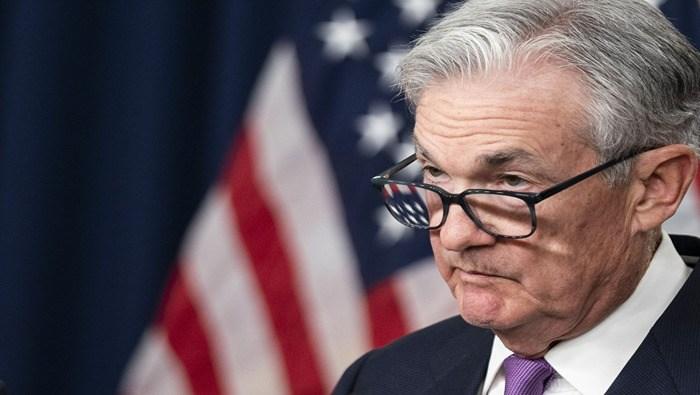2024-04-04 00:00
In the world of finance, words can sometimes be as powerful as actions. Known as "Fedspeak", the speeches, statements, and even subtle remarks made by key figures within the Federal Reserve can cause significant ripples or even tidal waves across global markets. Understanding this phenomenon is crucial for traders seeking to navigate the ever-changing financial landscape. What is Fedspeak? Fedspeak refers to the public communication of Federal Reserve officials, including the Chair, Board of Governors, and regional Fed Presidents. These communications can range from formal speeches and congressional testimonies to interviews and seemingly off-the-cuff remarks. Why Does Fedspeak Matter? The Federal Reserve wields immense power over the US economy via its monetary policy tools, primarily interest rate adjustments. Investors closely scrutinize Fedspeak for clues about the Fed's assessment of economic conditions and, more importantly, hints about their future policy decisions. A shift toward a more hawkish stance (signaling potential rate hikes) can impact stock and bond markets, while dovish language (indicating rate cuts or pauses) may have the opposite effect. Using Fedspeak in Trading: Here's how to incorporate Fedspeak into your trading strategies: Track the Calendar: Be aware of scheduled speeches, testimonies, and the release of Fed minutes. Market volatility surrounding these events often peaks. Analyze the Language: Pay close attention to specific word choices and changes in tone. Even subtle shifts can signal changing outlooks. Look for Discrepancies: Contradictions between different Fed officials can create uncertainty and fuel market movement. Consider the Context: Evaluate Fedspeak alongside broader economic data releases and global events to get a holistic view of potential market drivers. Technical Analysis: Combine Fedspeak insights with your chart analysis and indicators to identify potential trade setups. Important Note: Fedspeak can be intentionally vague or ambiguous, leaving room for interpretation. It is crucial to utilize it as one piece of your trading toolkit, not as a sole decision-maker. By understanding Fedspeak and its potential impact, traders can better anticipate market reactions and position themselves to navigate the dynamic world of finance. Fedspeak's Impact on the US Dollar The US dollar holds a unique sensitivity to Fedspeak. Hawkish language suggesting potential interest rate hikes tends to strengthen the dollar by making it more attractive to foreign investors via yield differentials. Conversely, dovish signals hinting at rate cuts or pauses can reduce the dollar's appeal. Eager to discover what the future may have in store for the U.S. dollar? Find comprehensive answers in our quarterly forecast! Get it today! Fedspeak and Precious Metals Gold and silver, often viewed as safe-haven assets, have an inverse relationship with Fedspeak and the US dollar. Hawkish tones suggesting tighter monetary policy can make gold and silver less appealing as inflation hedges, potentially driving prices down. Dovish language, however, can fuel inflation fears, driving demand for precious metals and potentially pushing prices higher. https://www.dailyfx.com/news/decoding-fedspeak-how-central-banker-comments-move-markets-gold-us-dollar-20240404.html

2024-04-03 21:30
Most Read: Euro Forecast and Sentiment Analysis - EUR/USD, EUR/CHF, EUR/GBP, EUR/JPY The U.S. dollar moved lower on Wednesday, pressured by a combination of weaker-than-expected economic figures and dovish signals from Federal Reserve Chair Jerome Powell. After a volatile day, the DXY index slumped 0.48%, retreating further from the multi-month highs set on Tuesday during the European session. Source: TradingView Focusing first on data, the March ISM Services PMI disappointed expectations, slowing to 51.4 from 52.6 previously and falling below the 52.7 forecast. This deceleration in the services sector, a major driver of U.S. GDP, raises concerns about the economic outlook. While one report doesn't establish a trend, a continuation of this pattern could signal trouble ahead, potentially reigniting fears of recession. For a complete overview of the U.S. dollar’s technical and fundamental outlook, request your complimentary Q2 trading forecast now! Also contributing to the greenback's poor performance were Powell's comments in a speech at the Stanford Business, Government, and Society Forum. At the event, the FOMC chief downplayed recent high inflation readings, indicating that nothing has really changed for policymakers, a sign that the central bank is still on track deliver 75 basis points of easing in 2024. Looking ahead, market attention will center on Thursday's US jobless claims data ahead of Friday’s crucial nonfarm payrolls numbers. In terms of estimates, initial filings for unemployment for the week ended on March 30 are seen inching higher to 214,000 from 210,000 previously - a very modest uptick that may not necessarily foreshadow significant challenges brewing on the horizon. UNEMPLOYMENT CLAIMS US unemployment claims, released weekly, offer valuable clues about the health of the American labor market and its potential impact on the US dollar. Understanding the relationship between this data and the greenback can empower traders to develop more informed trading strategies. Decoding the Signals Low Unemployment Claims: When the number of people filing new unemployment claims is low, it suggests a robust labor market. This economic strength can bolster the US dollar for several reasons. Firstly, it reduces the likelihood of the Federal Reserve implementing accommodative monetary policies, like lowering interest rates, which tend to weaken the currency. Secondly, a healthy job market often bolsters consumer spending and economic growth, attracting foreign investment and driving demand for the dollar. High Unemployment Claims: Conversely, a spike in unemployment claims signals a potential weakening in the labor market. This raises concerns about overall economic health, which can negatively impact the US dollar. A struggling labor market increases the likelihood of the Federal Reserve cutting interest rates to stimulate the economy. Lower rates make the dollar less attractive to foreign investors, leading to potential sell-offs. Integrating Claims Data into Your Strategy While unemployment claims are a powerful indicator, they should never be used in isolation. Here's how to incorporate them into your broader trading approach: Trend Analysis: Look beyond single data points. Analyze the trend over several weeks or months to gauge the overall direction of the labor market. Technical Analysis: Combine claims data with chart patterns, indicators, and support/resistance levels to confirm trends and identify entry/exit points. Fundamental Factors: Monitor broader economic indicators like GDP growth, inflation, and Fed statements for a holistic view of factors driving the US dollar. Important Note: Unemployment claims offer a snapshot of labor market conditions, but they aren't always a perfect predictor of Fed policy or dollar movements. Always employ a multifaceted approach for the most well-rounded trading decisions. Discover the art of breakout trading with our exclusive Breakout Trading Guide – your key to mastering market volatility and achieving consistency. US DOLLAR (DXY) TECHNICAL ANALYSIS The U.S dollar index fell on Wednesday, marking its second consecutive session of losses after encountering resistance at 105.00 earlier in the week. If weakness persists in the coming days, support appears at 104.00, where a short-term ascending trendline intersects with the 50% Fibonacci retracement of the October-December 2023 selloff. Subsequent losses will draw attention to the 200-day SMA. On the flip side, if buyers reestablish control of the market and initiate a bullish reversal, the first obstacle against subsequent advances emerges at the psychological 105.00 mark. Bears must vigorously defend this technical barrier; failure to do so could result in a rally towards 105.40. Additional gains beyond this juncture will shift the spotlight to 106.00. US DOLLAR (DXY) TECHNICAL CHART Source: TradingView https://www.dailyfx.com/news/us-dollar-sinks-on-weak-data-powell-s-remarks-jobless-claims-eyed-before-nfp-20240403.html

2024-04-03 17:30
Pound Sterling (GBP/USD, EUR/GBP) Analysis Enough US data to go around this week: ADP, services PMI and NFP GBP/USD bounces after disappointing US services PMI data sends USD lower GBP/CHF attempts to find resistance as the pair recovers from overbought territory See what our analysts forecast for sterling in the second quarter by reading out comprehensive pound sterling Q2 forecast: There’s Enough US Data to go Around this week There is a distinct lack of UK data out this week but that does not suggest sterling-linked pairs ought to be disregarded. FX moves picked up in the latter stages of Q1 and with central banks now considering interest rate cuts, the burning question is when will they have the confidence to start. In contrast, US data has been plentiful with ADP data adding to the robustness seen in the job market. US services PMI data helped extend the shorter-term dollar pullback after ‘new orders’ and ‘prices’ both declined in the month of March, seeing the headline reading moderate from 52.6 to 51.4. There is a notable amount of Fed speak to end the day, with Jerome Powell the standout of them all. GBP/USD bounces after disappointing US services PMI data sends USD lower GBP/USD sold off sharply in the latter stages of March after the Fed’s summary of economic projections revised growth and inflation higher but maintained its December view on the number of rate cuts for 2024. Robust growth and hotter inflation in 2024, prompted markets to downplay the possibility of three rate cuts this year, now sitting somewhere between two and three. That send GBP/USD lower where it now appears to have found support. US services PMI data for March revealed a decline in ‘prices’ and a forward-looking indicator, ‘new orders’. Given that the services sector is the largest contributor to GDP – the softer data appears to have released some of the hot air that had accumulated post-FOMC, weighing on the dollar. GBP/USD appears to have bottomed and trades back within the broad trading range which helped the pound trade near the top of the leaderboard in Q1 as other G10 currencies felt the effects of a strong dollar. Upside targets from here include the 1.2736 level and the upper bound of the trading range at 1.2800 flat. However, ‘high importance’ US data this week can get in the way of such a move should the job market continue to push on. Support lies at 1.2585 (coinciding with the 200-day SMA), followed by the recent swing low. GBP/USD Daily Chart Source: TradingView, prepared by Richard Snow GBP/CHF attempts to find resistance as the pair recovers from overbought territory Now that the Swiss National Bank (SNB) surprised markets with a 25 basis point cut in March, the Swiss Franc appears vulnerable. However, since the SNB meeting, GBP/CHF has failed to trade above the March 21st high, witnessing long upper wicks which ultimately fell short of the mark. The pair also attempts to recover from overbought territory and so there may be room for a shorter-term pullback should bears pile in from here. The gold overlay is the yield differential for the pair (GB 10 year bond yield -Swiss 10 year yield) and has helped, to some degree, explain the path of the pair. Support sits at the recent swing low around 1.1345 with resistance at 1.1460. GBP/CHF Daily Chart Source: TradingView, prepared by Richard Snow https://www.dailyfx.com/news/pound-sterling-update-gbp-usd-lifts-higher-gbp-chf-treads-carefully-20240403.html

2024-04-03 13:30
US Crude Oil Prices and Analysis US crude is back close to five-month highs Better economic data from China, and the US have buoyed hopes of a more balanced oil market OPEC and Jerome Powell will top Wednesday’s bill Crude Oil prices remained close to five-month peaks on Wednesday as markets looked toward a meeting of key producers at which production cuts are expected to remain in place. The Organization of Petroleum Exporting Countries will convene later for a scheduled meeting. Its delegates are likely to be content with recent oil-market action, which has seen prices rise consistently since December. Forecasters think they’ll be inclined to stick with the price-boosting output reductions currently in place. Signs of economic vigor in both the United States and China have underwritten hopes for a genuine near-term increase in energy demand. This in turn has broadened optimism that what might have been a heavily oversupplied oil market will come more into balance. This prospect has helped the publicly traded oil majors outperform markedly this year, even giving Big Tech a run. Meanwhile, conflict between Israel and Hamas retains the potential to restrict oil supply from the Middle East, either via the conflict itself spilling over to other regional powers such as Iran or via the consistent attacks on shipping by Yemeni Militants. The ongoing war in Ukraine has seen Russian energy infrastructure targeted. Russia remains a major oil exporter despite heavy Western sanctions. Of course, higher oil prices will feed into the inflation mix at a time when broader markets, and Western consumers, are hoping for tamer prices and near-term interest rate cuts. Big Oil’s bonanza could turn out to be central banking’s headache. With that in mind, the next major trading event is likely to be Federal Reserve Jerome Powell’s next speech, which will come as European markets are winding down on Wednesday. US Crude Oil Technical Analysis West Texas Intermediate Benchmark Crude Daily Chart Prices’ latest surge has taken them above both their previously dominant uptrend channel and, much more significantly, a downtrend line that had capped the market since it peaked in mid-June 2022 at $123/barrel. Given the speed and magnitude of recent gains, it’s not a stretch to imagine that this rally is getting a little tired, even if that doesn’t mean that major falls are in the offing. Sure enough, WTI’s Relative Strength Index now sits uncomfortably above the 70.0 level which signals a significantly overbought market. It stood at 71.8 on Wednesday morning. This doesn’t have to presage a turnaround, but it is likely to mean that the market pauses for breath, and where it does so is likely to be important. That downtrend line now offers some support at $84.04 and might come back into play if the psychological prop of $85 doesn’t survive on a daily or weekly closing basis. There is also important retracement support close by at $83.05. Still, momentum remains firmly with the bulls and seems likely to continue to do so even if some profit-taking stunts the current rally. --by David Cottle for DailyFX https://www.dailyfx.com/news/us-crude-oil-prices-surge-as-market-seems-sure-opec-cuts-will-stay-put-20240403.html

2024-04-03 12:00
Market Q2 Forecasts: US Dollar, Gold, Euro, Oil, Bitcoin, Yen, Equities Outlooks The second quarter of the year looks set to bring renewed volatility to a wide range of asset classes as a slew of central banks look set to pull the trigger on interest rate cuts. Learn How to Master Financial Markets with our Three Complimentary Guides There are a range of volatility drivers lining up in the second quarter of the year that will provide multiple trading opportunities. A range of major G7 central banks are set to start unwinding their restrictive monetary policy by cutting interest rates, or increasing them in the case of the Bank of Japan, US earnings will provide extra volatility to a range of major US indices that currently trade at, or near, multi-decade highs, while the Bitcoin ‘halving’ event historically sees the BTC push substantially higher. The war in Ukraine looks set to continue, the Middle East remains volatile, and markets will begin to look ahead to multiple elections across the Western World later in the year. The VIX Index, below, highlights the benign market conditions over the last few months as investors enjoyed a profitable, risk-on Q1. VIX – S&P 500 Volatility Index After a quiet start to Q2, gold prices rallied sharply in March, printing a fresh all-time high as investors, and central banks, bought the precious metal. Gold Daily Price Chart Bitcoin enjoyed a positive Q1, rallying from the start of the year. Heavy demand from spot Bitcoin ETF advisors drove demand, while the upcoming Bitcoin halving event – expected mid-to-late April - will cut new Bitcoin issuance in half, crimping new supply. The Next Bitcoin Halving - What Does it Mean? Bitcoin Daily Price Chart Learn From the Best: Q2 Technical and Fundamental Market Forecasts Australian Dollar Q2 Technical Forecast: AUD/USD and AUD/JPY AUD/USD remains in a long-term or ‘secular’ downtrend channel which has been in place since mid-February 2021. The base of this band has been very well respected, to the point where the relatively brief fall below it in the second half of 2022 looks like an aberration. Japanese Yen Q2 Fundamental Forecast: Brighter Days Ahead, Catalysts to Watch This article provides a comprehensive analysis of the second-quarter outlook for the Japanese yen, shedding light on factors that could spur volatility and dictate price action. British Pound Q2 Technical Outlook – GBP/USD, EUR/GBP, and GBP/JPY Technical Outlooks The British Pound has started the process of re-pricing against a range of currencies after the Bank of England’s shift in tone. Equities Q2 Fundamental Outlook: AI Euphoria, US Election and the Fed to Drive US Stocks US stocks enjoyed a broad rally in Q1 and the positive market sentiment looks likely to spill over into Q2. The prospect of rate cuts and the growing AI drive supports US stocks. Crude Oil Q2 Technical Forecast – WTI and Brent. What Looms Ahead? The US benchmark has scaled five-month highs at the time of writing and is closing in on a longer-term downtrend line on its weekly chart. This has capped the market since mid-2022, admittedly with few tests. Bitcoin Q2 Fundamental Forecast: Current Demand/Supply Imbalance is Driving Bitcoin Higher Bitcoin traders have enjoyed the first quarter of 2024 with the largest cryptocurrency by market capitalization buoyed by the SEC approval of a raft of spot Bitcoin ETFs in early January. Gold, Silver Q2 Technical Forecast: Key Resistance in Focus as Markets Get Stretched This article thoroughly examines the second-quarter technical outlook for gold and silver, delving into the nuances of current price action dynamics and market sentiment to uncover potential trends. Euro Fundamental Forecast: ECB Will Start Cutting Rates in Q2 Easing price pressures and a stagnant economy will likely see the ECB cut rates in Q2 with more to follow if recent central bank rhetoric is to be believed. US Dollar Q2 Forecast: Dollar to Push Forward as Major Central Banks Eye Rate Cuts The US dollar performed phenomenally in Q1 - something that is likely to continue but perhaps to a lesser degree now that growth is moderating and rate cuts come into focus. https://www.dailyfx.com/news/market-q2-forecasts-us-dollar-gold-euro-oil-bitcoin-yen-equities-outlooks-20240403.html

2024-04-03 08:11
Gold (XAU/USD) News and Analysis Geopolitical tensions add to gold’s allure despite rise in the dollar, US yields Gold breaks another all-time high with the psychological $2300 marker in sight See what our analysts foresee for gold in the second quarter by reading our fresh Q2 Gold Forecast: Geopolitical Tensions Rise in Eastern Europe and the Middle East In a concerted effort to cut off the Kremlin’s main source of funding for the war, Ukraine has been targeting oil infrastructure in Russia to the displeasure of US president Joe Biden, who says it could have far reaching consequences to global oil prices. The most recent attack took place 1,300 kilometers from the front lines and involved one of Russia’s largest oil refineries. The damage is being reported as ‘not significant’ but will keep Russia on high alert to guard its main source of financing. Additionally, a targeted attack on the Iranian embassy in Damascus resulted in the death of high-ranking commanders of Iran’s Revolutionary Guard. Iran vowed to respond, seeking “punishment and revenge”. This is the latest escalation that risks seeing Iran enter the conflict in a more direct manner. Thus far Iran’s involvement has mainly been as financier of the Lebanese militant group Hamas. Both escalations only serve to support the recent gold surge – helping the safe haven metal surge to another all-time high. Gold prices are heavily influenced by fundamental factors like demand and supply, as well as geopolitical tensions. learn the essentials that all gold traders should know: Gold Reaches Another All-Time High with $2300 Resistance Ahead Gold’s rise has been nothing short of astonishing, showing little regard for the rising dollar and the shorter-term lift in US yields after inflation data failed to show solid progress on Friday. The bullish move remained in the works as long as prices could hold support at the prior 2023 high of $2146.80. Signs of a bearish pullback emerged but ultimately failed as the safe haven metal surged higher. Central banks have been purchasing the metal, most notably the People’s Bank of China, despite month-on-month purchases dropping in February. Chinese citizens are also piling into gold as a way to combat a beleaguered property sector and a weakening currency, as well as the growing trend of protectionism and the move away from globalization. The $2300 mark serves as the next significant level of resistance but intra-day price action has retreated from the high. Gold remains well into overbought territory, threatening a pullback after a meteoric rise. The prior high of $2222 serves as the next level of support and helps to keep the bullish outlook constructive. Gold Daily Chart Source: TradingView, prepared by Richard Snow Gold volatility had perked up in recent days and weeks as central banks bid up the price of the metal at a time when they are seriously considering interest rate cuts – something that makes the non-yielding metal more appealing. However, a hot US economy suggests such rate cuts are likely to be delayed. The next indicators of US economic performance emerge later today with the services PMI print and Friday’s jobs numbers. Gold 30-Day Implied Volatility Source: TradingView, prepared by Richard Snow https://www.dailyfx.com/news/gold-price-achieves-another-all-time-high-as-safe-haven-appeal-ramps-up-20240403.html
